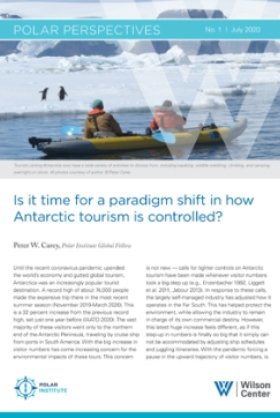Polar Perspectives No. 1 | Is it time for a paradigm shift in how Antarctic tourism is controlled?


The pause or reduction in tourist activity due to the current economic recession has provided Antarctic policymakers with a rare opportunity to make big changes in how the continent is protected and regulated. Recent research has shown only 32 percent of Antarctica can be classified as being pristine and free from human interference, and this area is declining (Leihy et al. 2020). ‘Business as usual’ is therefore not a good strategy for the future, especially when tourism pressure is just catching its breath before continuing its trend of rapid increase. Whether it is through wholesale changes like the creation of a Tourism Annex, or using existing instruments like Antarctic Specially Managed Areas to better control tourism impact, now is the time for a shift from reactively managing visitors to proactively regulating them.
In this first edition of Polar Perspectives, Dr. Peter Carey, Polar Institute Global Fellow, explores the important issues of Antarctic tourism. He describes the mechanisms in place to manage this growing industry and its impacts on the continent, as well as the challenges policymakers face to monitor and manage these activities in the future.
Author

Director, SubAntarctic Foundation for Ecosystems Research

Polar Institute
Since its inception in 2017, the Polar Institute has become a premier forum for discussion and policy analysis of Arctic and Antarctic issues, and is known in Washington, DC and elsewhere as the Arctic Public Square. The Institute holistically studies the central policy issues facing these regions—with an emphasis on Arctic governance, climate change, economic development, scientific research, security, and Indigenous communities—and communicates trusted analysis to policymakers and other stakeholders. Read more

Explore More
Browse Insights & Analysis
360° View of How Southeast Asia Can Attract More FDI in Chips and AI


